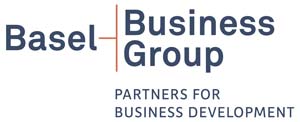We are all subject to constant change. Our understanding of corporate development and strategic development is based on proven models and experience. We do not submit to every fashion trend and we are very open – provided that, in the long run, benefits are created for our customers. We also include alternative ideas in our considerations and daily business.
The main focus is on the continuous improvement of performance to achieve the strategic objectives of a business. This only succeeds if the initiated changes are accepted and if the employees act upon it.

Efficient and Effective Management
Whether one can learn “management” is an issue that frequently arises and is often questioned. To this day, there is no scientifically based information on whether this is actually possible.
Successful management also means that employees are given a specific task with the necessary tact and sensitivity whereby they strengthen the team with their appropriate skills. This concerns the employee’s technical expertise and skills as well as their extended competence to take this into account in their daily business.
Change Management Happens – The Willingness to Change Is Inevitable
Change always occurs in one direction or the other. In principle, this is nothing new as people and businesses have dealt with change for a very long time. Our world seems to have become more complex and its technological change much faster. The result is that the cycles and the dynamics, on how to handle change, have increased drastically.
Sustainable change management ensures incentives and structural boundary conditions that promote an open communicative atmosphere. Thus, it contributes to the desired disclosure and dissemination of business-related information. But why do integration projects and change projects often fail? The causes are both multi-faceted and complex. The significance of communication and integration of all employees are essential contributions to change management and is therefore an important guideline for “change”.
We understand the change process as a whole, and we are familiar with initiating successfully, mentoring and ensuring sustainability.
Strategic Alignment – Integrating All Strengths
Strategies do not fail on paper. For most cases, strategies fail at their implementation. The gap between strategy formation and its realization illustrates one of the biggest challenges for many businesses. It is shown time and again that businesses, regardless of the quality of their strategy, struggle with a successful realization. In other words, they have difficulties to actually implement the anticipated competitive advantages. The most important driver for successful implementation of strategies is the so-called “strategic alignment”.
Strategic alignment describes the consistent focus on the action of all departments and employees according to the corporate strategy. Strategic alignment is generally regarded as the key driver for successful strategic implementations. Measures contribute to an improvement of the alignment. They are the on-going communication at all levels in business strategy, the linkage between individual goals and strategic development, staff participation, strategic HR management, clear distribution of roles, a free flow of information across departmental borders as well as guaranteeing progress in the implementation of these goals.

Lean Management
The idea of lean management exists for more than half a century. A lot has happened since the early days. Towards the end of the previous century, ‘lean’ was identified with staff cuts and job loss. A significant public damage in image arose. In the new century, the tide has turned: the known management philosophy is going through its second adolescence.
Lean management can be seen as a management approach that is characterized by, in particular, the principles of decentralization combined with its test on whether this is actually possible. Thereby, lean management pursues, both corporately as well as cross-company, the aim to precipitate an enforced customer orientation with consequent cost optimization for the entire corporate management.
Lean management does not just optimize the processes and achieve short-term success. A process – this is what lean management is all about – is merely a chain of coherent activities that jointly create customer benefit. To put it differently, the process describes the procedure, like the flow and the transformation of material, information, operations and decisions.

Integrated Change Management for a Sustainable Lean Success
Today, most lean projects fail not because processes have been poorly designed. Instead, they fail in the moment when the first obstacles have been overcome and subsequently, it is a matter of the continuous improvement of the current situation.
A process, which is permanent, does not occur automatically. Moreover, the process requires consistent processing and optimization. This is a challenging task that is often underestimated.
In the implementation phase, our focus is deliberately aimed at the topic of change management. The people of the different companies have to bear the changes. The process work can be ever so perfect. If the staff is not prepared to take this step/to adapt to change then nothing works, and investing in process specialists will remain ineffectually. A mindset and toolset is needed for each and every change. If one of the two is not available, the process cannot work. If there were only a changed mindset, the tools would be missing to operationalize the new ways in the practical purposes. If only the tools are available, but not the mindset, the process cannot work, either. Just the tools, which the staff is gladly to look at because they are supposed to be easily converted into practice, do not help to establish efficiency for the business. For the realization of successful ‘lean’ transformations, it is essential that first of all dogmas are gradually changed. In order to do this, one can also use the tools. The separation of the two, tools and mindset, simply cannot work. We have the necessary experience to organize ‘lean’ and successfully accompany you in your “change”.

